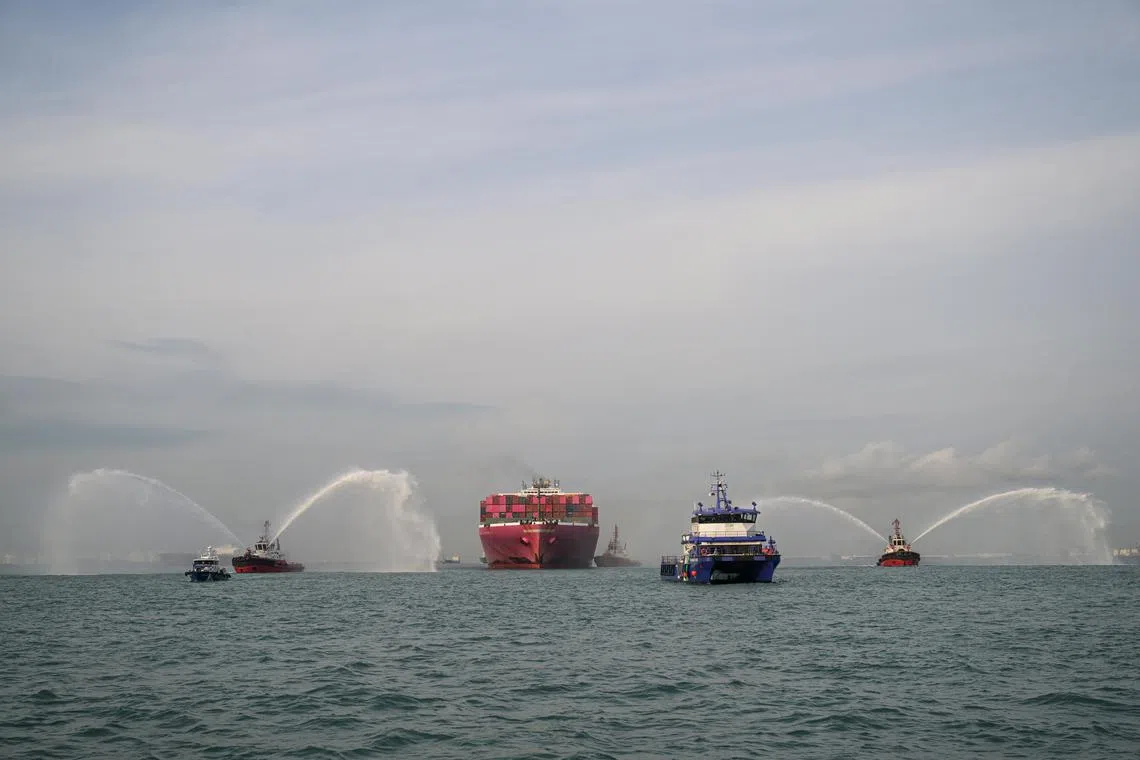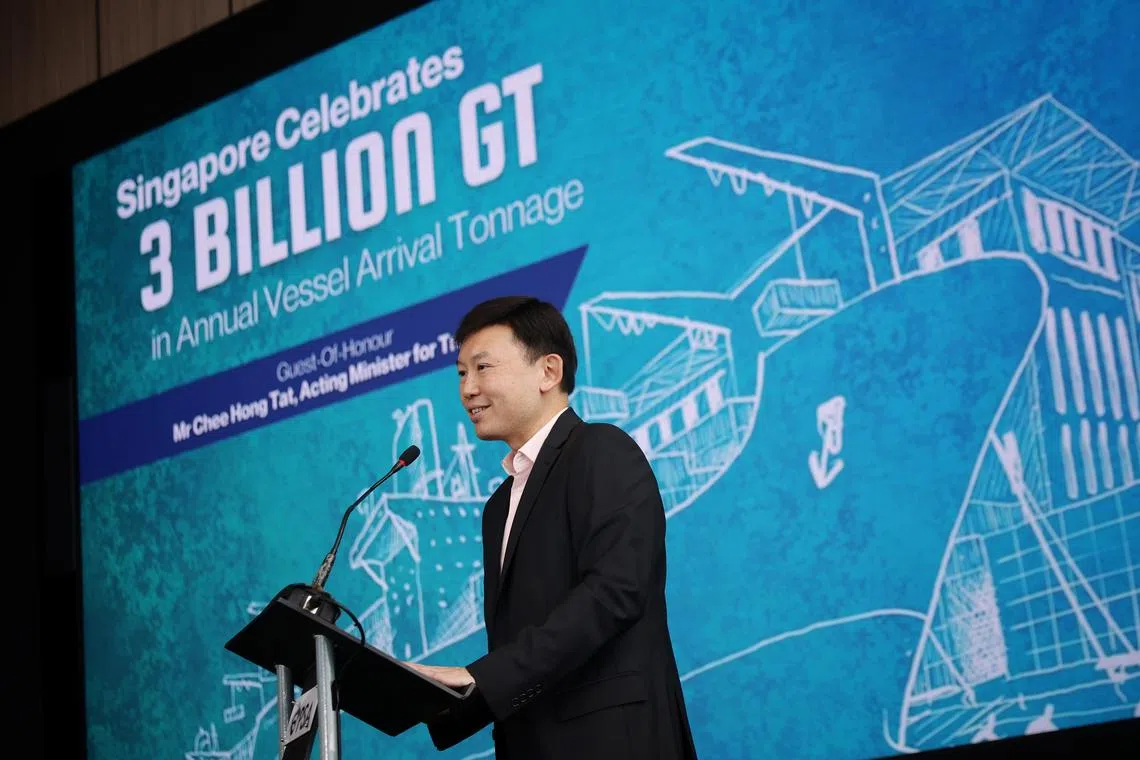Singapore port hits all-time high of 3 billion gross tons in vessel arrivals in 2023
Sign up now: Get ST's newsletters delivered to your inbox

A water salute being given to the ONE Olympus vessel as it entered Singapore on Dec 25. The arrival of the vessel helped set the record high in arriving ship traffic.
ST PHOTO: AZMI ATHNI
Follow topic:
SINGAPORE - Singapore’s port has reached an all-time high in arriving ship traffic, recording 3 billion annual gross tons in vessel arrivals so far in 2023.
Annual vessel arrival tonnage – or the internal volume of all ships that arrive in a year, including their engine room and non-cargo spaces – is a common maritime industry measure of vessel traffic calling at a port.
The record was achieved on the morning of Dec 25 with the arrival of the Singapore-registered container ship ONE Olympus at Pasir Panjang Terminal.
Singapore’s port reached 1 billion gross tons in 2004 and 2 billion gross tons in 2011.
Marking the latest milestone on Dec 26 at port operator PSA’s office in Pasir Panjang, Acting Transport Minister Chee Hong Tat described it as an “especially significant” breakthrough, given the choppy waters the country’s maritime industry has had to navigate in the past few years.
Mr Jeremy Nixon, global chief executive of Ocean Network Express, which operates ONE Olympus, said the shipping company was proud that one of its ships has helped Singapore achieve this milestone.
Mr Ong Kim Pong, group chief executive (designate) of PSA International, called it a “significant achievement” and pledged that the port operator would continue positioning Singapore as a premier hub port.
Mr Terence Seow, chief executive of Jurong Port, said the achievement reflected the reliability and resilience of Singapore’s maritime sector.
Mr Chee said the biggest success factor for Singapore’s port was the strong partnership between the Government, industry and unions.
“Other people may try to copy our hardware and infrastructure. They may even try to follow our technologies and operating systems. We can’t avoid that,” he said.
“But many find it difficult to replicate our trusted tripartite ecosystem.”

Acting Transport Minister Chee Hong Tat described the latest milestone as an “especially significant” breakthrough.
ST PHOTO: JASON QUAH
Pointing to the challenges facing the industry in recent years, Mr Chee recounted the industry downturn in 2016 and supply chain disruptions during the Covid-19 pandemic. The industry is currently confronting slowdowns in production and consumption amid elevated inflation.
He also cited rising geopolitical tensions around the world and the wars between Russia and Ukraine, and Israel and Hamas, as factors that have given rise to economic uncertainty and instability.
The conflict between Israel and Hamas has spilled over to the Red Sea and affected ships sailing through the Suez Canal, added Mr Chee.
Since Dec 15, four of the world’s five largest container-shipping companies have paused or suspended services
Around 30 per cent of the world’s container trade zips through the Suez Canal, which connects the Red Sea to the Mediterranean Sea. The pause in operations through the waterway has already driven up delivery times and freight costs.
Mr Chee said the Ministry of Transport and Maritime and Port Authority of Singapore (MPA) are tracking these developments and keeping in close touch with their partners and other relevant parties to mitigate any disruption.
Elsewhere, work on the Tuas mega port opened officially in September 2022
This takes the total number of operational berths to eight.
Tuas port is being developed in four phases and will be the world’s largest fully automated terminal when completed in the 2040s.
Reclamation work on the port’s second phase is 70 per cent complete, said Mr Chee.
He added that “good progress” has also been made on reclamation plans for the port’s third phase.
When it is ready, operations at Singapore’s other ports – Keppel, Brani, Pasir Panjang and Tanjong Pagar – will be consolidated there. The mega port will have a handling capacity of 65 million twenty-foot equivalent units (TEUs) of containers, a one-third increase from Singapore’s current capacity.
Mr Chee said the authorities were also making headway in improving port efficiency, with MPA starting the use of a digital planning and coordination platform in October for vessels at PSA terminals and Jurong Port for cargo operations.
The platform displays real-time data on vessel and port resources, resulting in more efficient vessel turn-around times.
It will be rolled out to all vessels departing from and arriving in Singapore in 2024.
Between January and November, Singapore’s port handled 35.6 million TEUs of containers, according to the MPA website. It recorded 37.3 million TEUs in 2022 – the second-highest container throughput on record for the country.

